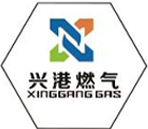
10 月 . 21, 2024 13:57
Back to list
Gas Pressure Reduction System Overview and Applications in Various Industries
Understanding Gas Pressure Regulators Importance and Functionality
In the world of engineering and domestic applications, the safe and efficient use of gases is paramount. One of the critical devices that facilitate this is the gas pressure regulator, or مخفض ضغط الغاز in Arabic. This device plays an essential role in controlling the pressure of gases, ensuring that they are delivered at appropriate levels for various applications, from industrial processes to residential heating systems. Understanding how these regulators work and their significance can provide insights into their widespread use.
What is a Gas Pressure Regulator?
A gas pressure regulator is a mechanical device designed to reduce the pressure of a gas to a manageable and safe level. It allows for the consistent flow of gas at a predetermined pressure, providing stability in systems where pressure fluctuations could lead to dangerous situations. Regulators are used in a variety of applications, including natural gas supply for heating appliances, industrial gas processes, and even in medical facilities for supplying gases to patients.
How Do Gas Pressure Regulators Work?
The basic function of a gas pressure regulator relies on the principles of pressure and flow dynamics. In essence, the regulator takes high-pressure gas from a supply line and reduces it to a lower pressure suitable for use. The key components of a pressure regulator include an inlet where the high-pressure gas enters, a diaphragm that responds to changes in pressure, and an outlet that delivers the regulated gas.
When gas enters the regulator, it pushes against the diaphragm. As the pressure rises, the diaphragm moves, which affects a valve that controls the flow of gas from the inlet to the outlet. The regulator maintains a steady output pressure by adjusting this valve based on the diaphragm's position. If the downstream pressure drops, the diaphragm moves to open the valve wider, allowing more gas to flow through. Conversely, if the downstream pressure rises, the diaphragm closes the valve partially, reducing the flow. This continuous adjustment keeps the output pressure stable despite variations in the supply pressure or downstream demand.
Types of Gas Pressure Regulators
There are several types of gas pressure regulators, each designed for specific applications
مخفض ضغط الغاز

1. Single-stage Regulators These are typically used for low-pressure applications. They are simple and effective, making them suitable for residential heating or cooking appliances.
2. Two-stage Regulators These regulate pressure in two phases, providing more stable output pressure. They are commonly used in industrial applications where the control of high-pressure gas is critical.
3. Instrumentation Regulators These are high-precision regulators designed for analytical and laboratory applications. They provide extremely accurate pressure control, which is essential for scientific measurements.
4. Automatic Pressure Regulators These devices are equipped with advanced controls that automatically adjust the gas flow based on pre-set parameters, making them ideal for complex and variable systems.
Importance of Gas Pressure Regulators
The significance of gas pressure regulators cannot be overstated. Their ability to maintain safe operating pressures is vital in preventing accidents such as gas leaks, explosions, or equipment malfunction. In residential applications, they ensure home appliances operate efficiently, reducing the likelihood of wasted energy and enhancing safety.
In industrial settings, pressure regulators protect equipment and streamline processes, contributing to overall operational efficiency. They also play a crucial role in ensuring compliance with safety regulations, which is essential for companies operating in hazardous environments.
Conclusion
Gas pressure regulators, or مخفض ضغط الغاز, are essential components in various systems that utilize gases. Their role in controlling and stabilizing gas pressure is critical for safety and efficiency. With the different types available, users can select a regulator that best suits their specific needs, whether in a home, laboratory, or industrial facility. As technology advances, these devices will continue to evolve, further enhancing the safe and effective use of gas in our everyday lives. Understanding their functionality and importance helps underscore the need for proper regulation and maintenance in any gas-powered system.
Latest news
-
Unlocking The Quality Gas Pressure ReducersNewsNov.01,2024
-
The Role of Gas Pressure Reducing StationsNewsNov.01,2024
-
The Importance and Functionality of Safety Relief ValvesNewsNov.01,2024
-
The Essential Role of Safety Valves in Natural Gas ApplicationsNewsNov.01,2024
-
The Essential Role of Gas Pressure RegulatorsNewsNov.01,2024
-
Enhance Your Premium Gas FiltersNewsNov.01,2024

